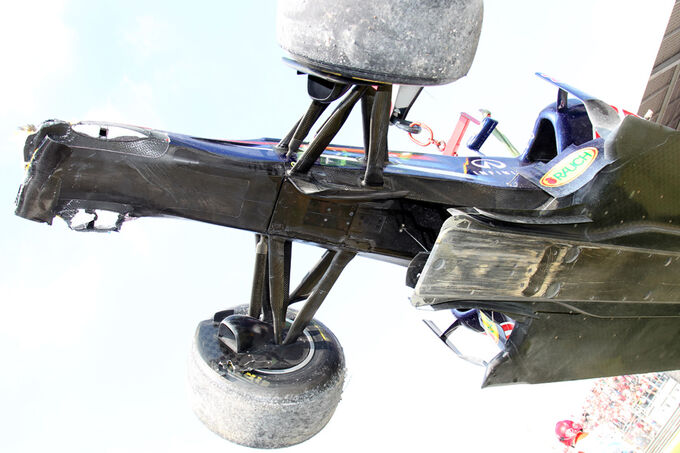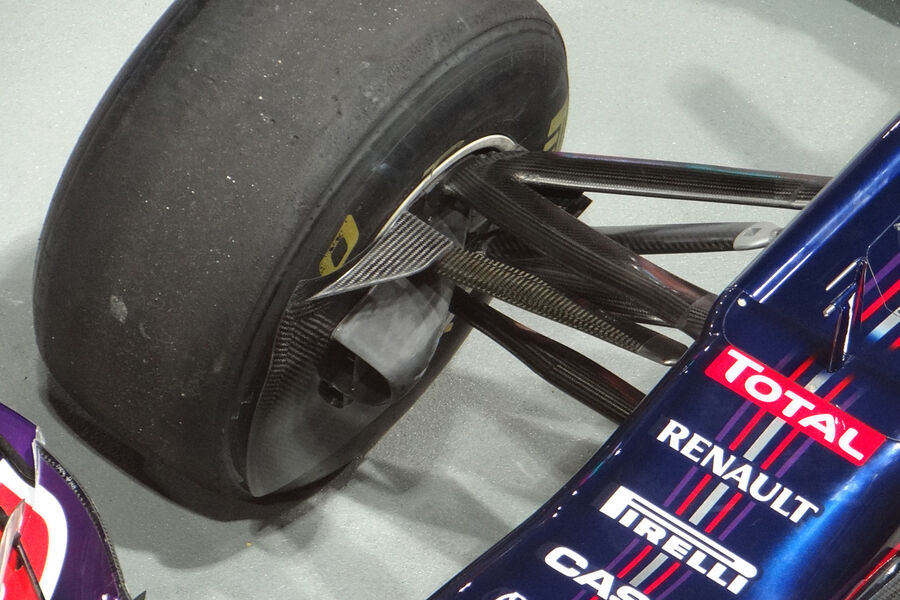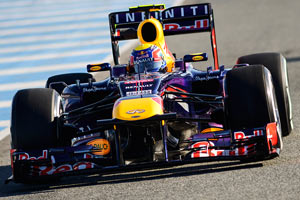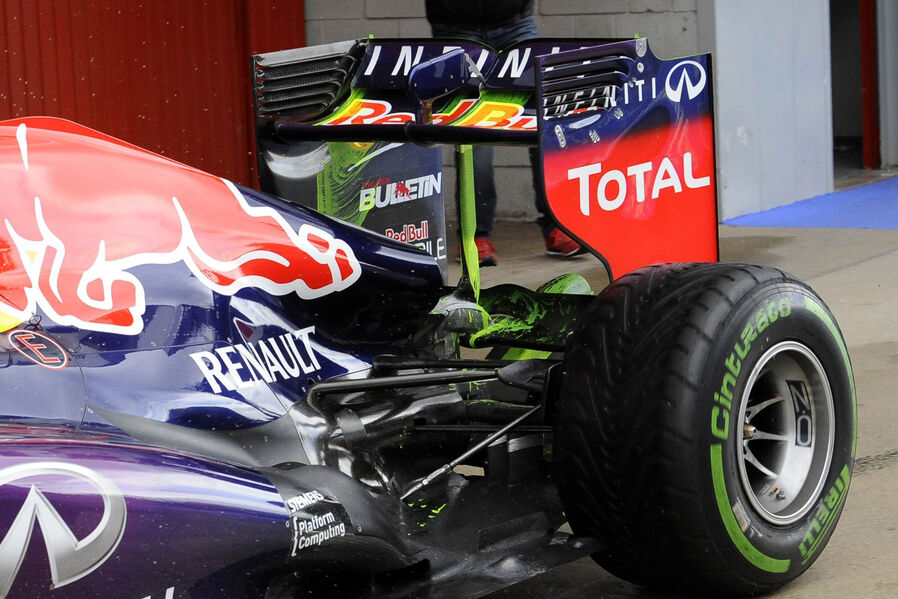How does Red Bull seal its floor along the sides?
This is a long post. I don’t understand how Red Bull manages to run so much rake and why the other teams do not. I show my observations and thoughts but do so so that any mistakes, misunderstandings or omissions can be corrected by those who do know how they do it.

This picture shows the huge rake that they run – how do they prevent air from getting in under the floor from the sides? I would think the only way would be a strong vortex rotating down alongside the car and outwards away from the car at the track. Renault (Lotus?) had the exhaust coming out at the front of the floor in an attempt to create a strong sealing vortex but it was not a success (because of variations as the throttle was used?)

Looking from the back of 4 cars running straight ahead. The Red Bull has its diffuser set much higher than the others.
If it is a vortex that is sealing the floor I don’t understand how it is created.

Starting from the front. The wing has 2 vanes to assist in sending air out around the outside of the front tire. When it comes in again behind the tire it should help make the air flow clockwise (looking from the front at the right wheel as in this picture). The spinning tire would deflect the airstream upwards which would assist the required rotation. This wing is sending a lot of air around the outside of the tire.

On the underside there is incredible detailing. Long strakes towards the centreline sending the air directly down the inside of the tire. The angle of attack of the wing creates a whole succession of little diffusers under the wing really creating downforce here

I forget the name of the two vanes in front of the tea tray – snow plough I think. It would seem to me that these are critical for initiating the vortex that seals the sides of the floor – am I am correct in my supposition?

View of the underside with one of the vanes still in place. The interaction of the airflow from the vane when it meets up with the air going around the outside of the tire could, I suppose, result in a vortex with the desired rotation. We also see the vane alongside the tea tray, the barge board and the vertical vane at the start of the sidepod The suspension arms and the front brake ducts are also aerodynamically shaped. It is all a complex aerodynamic system.

The front corner of the floor where the vortex should be. The bottom of the vertical sidepod turning vane and the trailing edge of the barge board seem to be directing the airflow towards the little flap along the edge of the front of the floor. That all fits in nicely with the vortex I am looking for. Higher up the turning vane is sending the inside air to nicely keep the air coming around the outside of the tire away from the sidepod to join up with the air coming through on the inside of the tire. We can see the back of the brake duct which is deflecting the air downwards just as required for the vortex.

Same area but with the snow plough visible and more of the barge board showing the slot in it –( to create a vortex?). The suspension wishbones seem to be fairly aerodynamically neutral.

The same area where the beautiful detailing and the massive fillet between the sidepod and the floor – a really critical part for good airflow conditions.

The brake ducting. Does not show the trailing edge details which we glimpsed in a picture higher up. Williams tried taking the air through the front axle from inside to outside but gave up on that scheme. I think the air is fed from inside to outside by all the cars (not through the axle). I know there are rules preventing using impellers to draw the air through the wheel (by shaping the ‘spokes’).
EDIT:
Just seen this in the Ferrari thread. Very different treatment of the sidepod to floor joint. Aero guy that Crucial Extreme asked about the flo viz says it looks pretty good - a little separation after the vane and at the joint. Will this generate a vortex & which way will it turn?
















